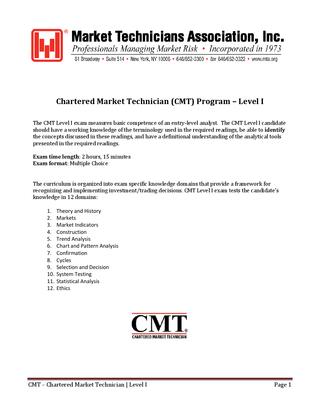COM 9507-01/ANAC
Money Market Services Commercial Papers
- fevereiro 17 2021
- Por: Vendas Aerotronic
- 0 Comentário
Contents
FIMMDA has issued operational and documentation guidelines, in consultation with Reserve Bank of India, on Commercial Paper for market. To meet sudden demand for funds arising out of large outflows. Overnight interest rate swaps are currently prevalent to the largest extent. They are swaps where the floating rate is an overnight rate and the fixed rate is paid in exchange of the compounded floating rate over a certain period. A forward rate agreement is an agreement to lend money on a particular date in the future at a rate that is determined today.

The process starts from observing the yield for the shortest-term money market discount instrument (i.e. one that carries no coupon). This yield is used to discount the coupon payment falling on the same maturity for a coupon-bearing bond of the next higher maturity. The resulting equation is solved to give the zero yield for the higher maturity period. Although commercial paper, as noted, is the largest sector of the money market, there is relatively little trading in the secondary market.
Zero Collateral Loans (CGTMSE)
These securities are normally referred to, as “gilt-edged” as repayments of principal as well as interest are totally secured by sovereign guarantee. It controls the manner in which various scheduled banks raise money from depositors. Further, it controls the deployment of money through its policies on CRR, SLR, priority sector lending, export refinancing, guidelines on investment assets etc. Long-term securities typically offer more return than short-term securities because investors usually prefer to lend money for shorter terms.

Commercial papers come with the flexibility of different maturities that ranges to about 270 days. Commercial papers are mainly issued by entities with a high credit rating like big firms and corporations to meet their short-term liabilities. Issuers can raise a considerable sum of money from investors through commercial papers. These instruments are issued at a discount from the face value which depends on the prevailing interest rate and the reputation of the issuing entity.
CDs are short-term borrowings in the form of Usance Promissory Notes having a maturity of not less than 15 days up to a maximum of one year. To undertake developmental activities, such as, introduction of benchmark rates and new derivatives instruments, etc. To function as the principal interface with the regulators on various issues that impact the functioning of these markets.
Global Money Markets Related Tutorials
No worries for refund as the money remains in investor’s account.” Issuing a certificate of deposit is a secure way to invest in the short to medium term. Hopefully, this guide to CDs has shown you the eligibility, features, and benefits of fixed income instruments like CDs and why you should invest in them for your financially securing your future. It is a short-term money market tool, including apromissory noteand a set maturity. And the surprising fact is that the commercial paper does have a validity of maturity from a minimum of 7 days. The only thing we must take care of is that the period must not get over the credit rating date of the owner.
- Money market instruments are short-term financing instruments aimed at increasing businesses’ financial liquidity.
- Subject to changes in the over all interest rate scenario, the price of these securities may appreciate or depreciate.
- It is an unsecured money market instrument issued in the form of a promissory note and was introduced in India for the first time in 1990.
- Satellite Dealers work in tandem with the Primary Dealers forming the second tier of the market to cater to the retail requirements of the market.
Commercial papers are traded at the money market and are issued for a short tenure with a set maturity date. The registration of commercial papers should only be granted to companies having Rs. 5 cores and above net worth with excellent dividend payment records. Under the category of people who can issue there comes non-banking institutions of finance, the corporate and then the primary market commercial paper features dealers. While under those who can invest there come the individuals, the NRI’s, FII and other incorporate –corporate bodies. Alternatively, many open-ended mutual fund schemes also includetreasury billsin their corpus for individuals willing to invest through such funds. They are primarily short-term borrowing tools, having a maximum tenure of 364 days, available at zero coupons rate.
The Federal Reserve Bank of New York also collects,seasonally adjusts, and releases month-end data on outstanding commercial paper from the same respondents. These are instruments that produce a continuing source of funds. The reason is the maturity of these funds can be customized to suit the requirements of the issuing entity.
Fixed deposits are even referred to as CDs or time deposits by certain banks. They come with the same term period, a minimum requirement for a deposit, and high-interest rates compared to traditional savings accounts. One difference https://1investing.in/ is that CDs are freely negotiable while FDs are not. It is a short-term debt instrument issued by the financial companies to various eligible companies which need immediate funds for their short-term liabilities.
One such debt tool is the commercial paper that came into the Indian money market in 1990 and initiated financial reform in India. Upon maturity, the redemption is done at the face value plus the interest received. Although considered to be a safe option, the CD is also subject to inflation. So in such volatile times, you’re likely to have lower returns.
Do money market instruments have a fixed maturity?
The capital market instruments are used to finance long term capital requirements. Money markets deal in short term lending, borrowing, buying and selling. In contrast, capital markets deal in long term lending or borrowing. Corporations or investors with sizeable investible amount deal in capital markets. Financial regulators in India are responsible for overseeing the capital market activities.
Credit quality, yield, and maturity are key components of fixed-income securities. Fixed interest rate securities are those in which the interest payable is fixed beforehand. Floating interest rate securities are those in which the interest payable is reset from at pre-determined intervals according to a pre-determined benchmark. Therefore, in turn, helps to regulate the level of liquidity in the economy. It also enables lenders to turn their idle funds into an effective investment.
No limitation on the commercial paper market apart from the least size of the note. However, the size of one issue and each lot should not be less than Rs. 1 crore and Rs. 5 lakhs respectively. On 27th March 1989, commercial paper in India was introduced by RBI in the Indian money market.
A stronger industrial paper market was spurred by the Lehman Brothers default in 2008. It crushed the commercial paper market and brought on two cash market funds holding paper to break the buck, which happens when web asset worth falls under $1 per share. After that, even rock-solid firms such as Coca-Cola Co. fled the industrial paper market.
These are sold directly by the issuers to the investors or else placed by borrowers through agents / brokers etc. The issuer of commercial papers can issue the papers either through banks or dealer banks or directly to the investors. So, therefore, commercial banks raise money through certificates of deposits only. And the only drawback that you can figure out here is that it is non-negotiable through its delivery and also the endorsement. Even though commercial banks cannot use CP as the market instrument.
Business Phone Banking
OMO or Open Market Operations is a market regulating mechanism often resorted to by Reserve Bank of India. Under OMO Operations Reserve Bank of India as a market regulator keeps buying or/and selling securities through it’s open market window. Primary Dealers can be referred to as Merchant Bankers to Government of India, comprising the first tier of the government securities market. Satellite Dealers work in tandem with the Primary Dealers forming the second tier of the market to cater to the retail requirements of the market. The yield or the return on the instrument is held till its maturity is known as the Yield-to-maturity .
Here are some salient features of CD’s and how they compare to other financial instruments. IndianMoney.com’s complaint portalIamcheated.comcan help you resolve the issue. If you want to post a review on any company you can post it on Indianmoney.comreview and complaint portal IamCheated.com. Despite a few limitations, this has helped bring financial reform in India and helped companies overcome the financial crisis. You can learn in detail about various such concepts included in the syllabus by visiting Vedantu’s website.
Individuals looking to generate short term gains through secure investments can choose to park their funds in such securities. Also, such G-secs can be resold in the secondary market, thereby allowing individuals to convert their holding into cash during emergencies. Treasury bills or T-Bills are released on behalf of the Central Government by the Reserve Bank of India to raise money. They have the highest short-term maturities of up to one year. Actually, 3 separate maturity periods are released by T-Bills, 91 days T-Bills, 182 days T-Bills, 1-year T-Bills.
Such tools act as a liability to the Indian government as they need to be repaid within the stipulated date. Corporates which get pleasure from a excessive ranking can diversify their sources of shortterm borrowings using CPs. Since 1993, CP market has significantly increase in India because of the large funds available from the banking sector as well as limited availability of other assets. As per RBI, the CP amount outstanding in 2000 was 7,814 crore. Cum-interest means the price of security is inclusive of the interest accrued for the interim period between last interest payment date and purchase date. 2) Through private placements to large institutional investors.




